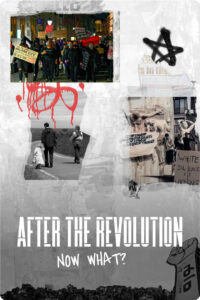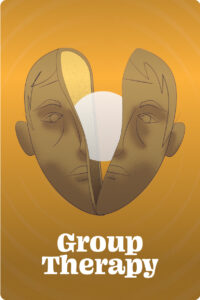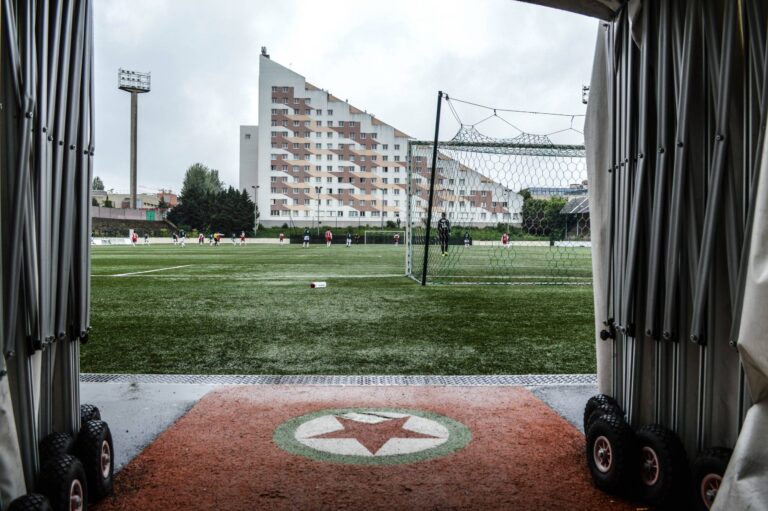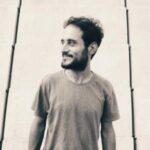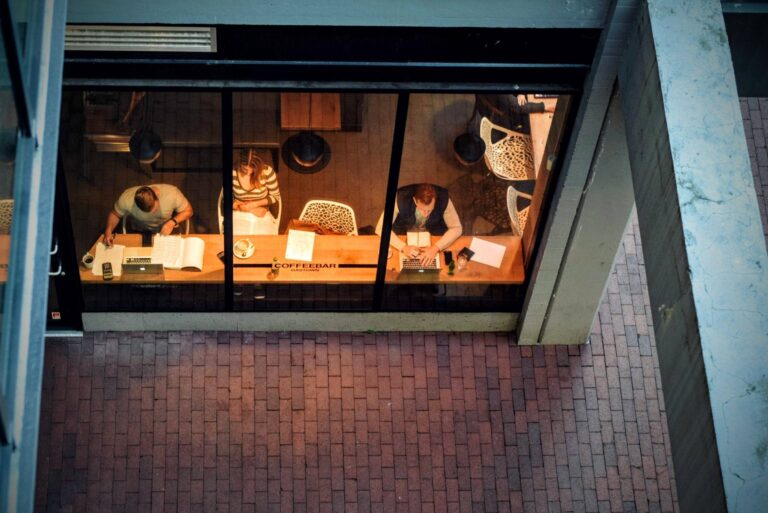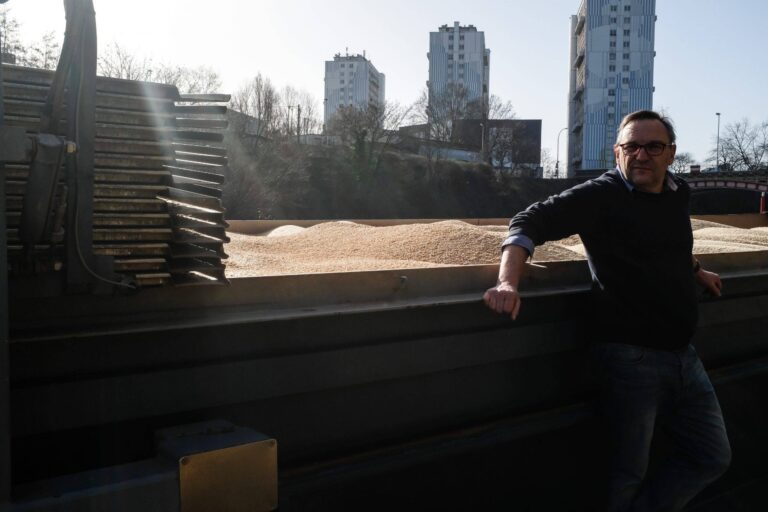His name is Kingsley, as a tribute to the story of an African immigrant who had taken a boat in the attempt to reach Europe and whose story had moved his father Christian Coman. One evening in August 2020, in Lisbon, Kingsley stripped PSG of winning its first Ol’ Big Ears with an outrageous header goal. Born in 1996 in the capital, the Parisian boy attended all his classes at the Camp des Loges, the Qatari club’s training center based in Saint-Germain-en-Laye in the Yvelines, the Parisian West. Yet young Kingsley takes his first steps as a football player on the East side, in US Sénart Moissy, the football academy of Moissy-Cramayel in Seine-et-Marne of which he is currently the sponsor. All alone, Kingsley Coman perfectly sums up the path that a young talent from the Parisian suburbs can possibly take.
Unlike the winners of the 1984 European Champions League, among whom Thierry Tusseau was the only one to come from Noisy-le-Grand and in the 1998 team of “les Bleues” which included three Île-de-France players, Lilian Thuram (Fontainebleau), Patrick Viera (Trappes) and Tierry Henry (Les Ulis), the World Champions Title in 2018 revealed an indisputable statistic. Eight players (Kylian Mbappé, Paul Pogba, Blaise Matuidi, Presnel Kimpembe, N’Golo Kanté, Benjamin Mendy, Steven Nzonzi, Alphonse Areola) originated from Île-de-France, a bit more than a third of the Basque coach Deschamps’ selection.
Better than that, over the past five editions of the World Cup, the Parisian Metropolis alone provided sixty players, including sixteen for the Russian episode. Not to mention their high proportion already in France’s youth teams and their overrepresentation in the five top European Championships as well. In 2018, no fewer than one hundred and one Île-de-France players played in Ligue 1. The facts speak for themselves.
Football goes hand in hand with motor skills[…]. However, motor skills are practised outside, directly in the hood. Young people jump, fall and acquire these things very early.
Mamadou Diouf, technical director of the Seine-et-Marne football club
The street or nothing
In terms of football education, French training know-how would actually be nothing without the lessons that come from childhood and the street – those football games on the tarmac at the foot of the tower blocks, where everyone, in control of a barely inflated ball or a homemade paperball wrapped with tape, has to show abnegation and imagination to impose themselves.
“The best way to learn is still to play a five-a-side with friends,” says Philippe Bretaud, former instructor of INF who is now in charge of the women’s national team at INSEP. “Education must start very early and the football clubs’ academies undertake this first step, working on the weak foot or improving certain flaws. But before attending a football academy, football played with friends is what really makes the difference. Unlike judo where you need a training room or tennis where you need a net, playing football only requires a ball and some space. This is the big advantage of this sport and the reason why it is the most commonly practised sport in the world. By training twice at the club as well as in the street, their first trainer turns out to be themselves.”
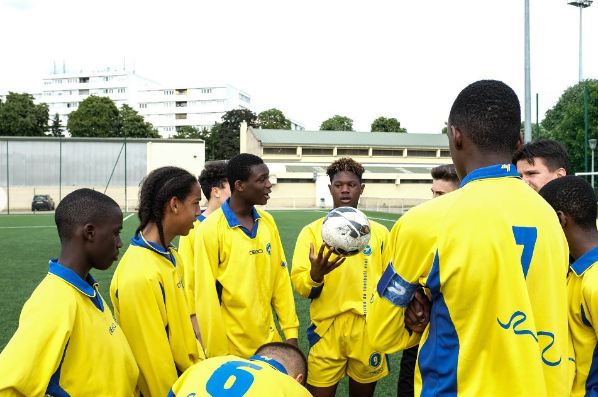

From Mantes-la-Jolie to Torcy, on an urban field or between two oaks, you see the same movements, the same fuss and the same never-ending matches until nightfall. Over there, the little ones rub along with the elders without hesitation in spaces very often as small as a stairwell, developing an early relationship with the round ball. “The Île-de-France region has a lot of densely populated working-class districts and many fields of all types,” says Sambou Tati, coach and president of the US Roissy-en-Brie who has witnessed Paul Pogba’s beginnings. “As a kid from the neighbourhood walks out of school or home, his eyes will go straight to the ball. His favorite hobby will be to play football. And it helps them to develop their ball skills.” Playing football instead of loitering around is seen as a loophole. A hymn to freedom in the heart of public spaces where everyone fashions their favorite moves. “Football goes hand in hand with motor skills,” Mamadou Diouf, technical director of the Seine-et-Marne football club explains then. “However, motor skills are practised outside, directly in the hood. Young people jump, fall and acquire these things very early. When we see all those new private centers dedicated to five-a-side football are crowded, we know why. That’s because you get more chances to touch the ball. That’s the basis of football and if you play five-a-side football at a young age, you know why as well.”
An incredible cultural melting pot
At the center of an incredible web of amateur clubs among the world’s most packed ones, some of them like AC Boulogne Billancourt have set a ceiling of 1,000 registered players and that is how everybody is initiated into football, as in Porte Alegre’s favelas, half a world away, where a certain Ronaldo de Assis Moreira, alias Ronaldinho, has been multiplying nutmegs. From a step-over to a feint, there are thousands of them performing – they dribble, they tease each other, they score – without being afraid to arrive knackered for practice, the real one, the one at their club usually located a stone’s throw away from where they live.
From the good old clay fields to the latest generation artificial turf, more than 300,000 registered players of all ethnicities compete every weekend. An incredible cultural melting pot which takes root in French history and its colonial past and which today represents a multi-coloured reservoir of infinite potential. “Football is just a social representation of French history,” Philippe Bretaud says. “The fact that Île-de-France provides good players is simply linked to demographics and population density. That doesn’t mean that a five-a-side in the countryside isn’t as good as in the suburbs, however there is more proximity and age diversity in the latter. Also pressure challenges you to aim higher. Socially, there are loads of underprivileged players who don’t go into other sports. It highlights the fact that we have plenty of players in the clubs and that the average level is higher than elsewhere.”
President of the Ligue Paris Île-de-France Jamel Sandjak adds: “Our region has a diverse population and it naturally responds to the popularity of football. That is why football is so important for social life, as we can see it in Brazil or in Turkey. And that is why the bar is said to be higher in our Ligue Championships compared to others. All of the scouts say so.”
A little extra something on which trainers make their players work so that they gain in simplicity and efficiency. Following the steps of the 1998 world’s ex-champion Bernard Diomède, who created his own academy promoting education through sports in Issy-les-Moulineaux, Mamadou Diouf succeeded in making US Roissy-en-Brie a real incubator conducive to good development. Just a step away from the RER station, the club has three practice grounds and around forty trainers. He is also a member of the technical commission of Seine-et-Marne and of the Paris League. “If you don’t have enough instructors, it turns into day-care,” he insists. “With me, they have no choice but to obtain their diplomas. We have white, black, mixed, Arab, and Asian players. It’s all there. But it’s not only football. They are taught respect and certain values of life such as how to say hello, how to listen, and how not to strike a blow back. We are very attached to academic follow-up and are in collaboration with all the schools in the city. I have coached many of them and I can tell you they need guidelines in order to improve.”
Between the social elevator and the fine speeches
One might say football is a school for life. But is it really? One thing is for sure, one must be careful not to heed the siren song of money. Those suburbans, most of them quickly standing out from the rest, are well aware that to succeed in football is a way to rapidly climb the social ladder. As long as you break into this enormous laboratory in which recruiters from across the world are rushing to find the rare gem, you are promised to a big contract.
Professional clubs deploy a whole network to spot new talents all over the area. “They come from Nantes or even from Middlesbrough, sometimes even for U6 players,” Mamadou Diouf witnesses again. “It is really difficult to cope with because they start to sell dreams to the kids and that is not good. Some parents are caught up in a dream, meanwhile rare are those who get chosen at the finish line.”
An incredible cultural melting pot which takes root in French history and its colonial past and which today represents a multi-coloured reservoir of infinite potential
Further in the North, the AS Eragny in the Val d’Oise, is not the best known club in the outer ring road of Paris. However Presnel Kimpembe’s astounding rise has brought his boyhood football academy into light. Son of a delivery driver who had been doing multiple roundtrips in order to drive his son to training sessions, Presnel used to play on the streets of les Dix Arpents, his hometown, and toughened up very early on. In 2005, he was ten when he was spotted by the PSG. He became good friends with Kingsley Coman over there. Soon his career turned to a rocky path, his physique considered to be too fragile.
“Football originates from working-class areas and that is the case of Presnel too,” says Michel De Sousa, who is in charge of an amateur football club for children in Eragny. “He was persistent. At that time, PSG took him with Fodé Ballo-Touré, who is now in Monaco. They both came from the same neighbourhood and were going together to the Camp des Loges.” Between their modest everyday life and the responsibilities they take on within their families, somehow, those peerless players grow up faster than others. Like Kimpembe, Paul Pogba had to work hard in Roissy-en-Brie. Soon coveted by the biggest clubs including Manchester United, where he ended up signing for, at sixteen after two years in Le Havre, he had already made his marks as he went up winning his first interdistrict competitions at La Renardière, side to side with his two big brothers Mathias and Florentin.
“Paul was hungry for it,” Sambou Tati remembers. “He is a role model for our young players. He always worked hard and it is no mere coincidence if he has got where he is now. He never missed a training.”
From dream to reality
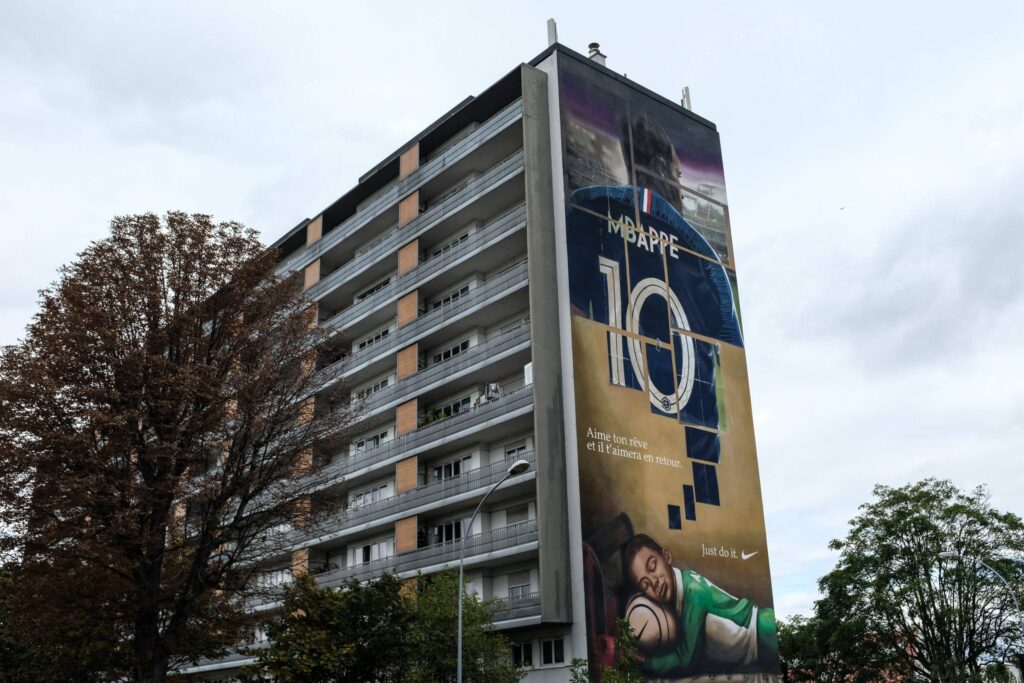
We are here this Saturday, meeting up in the parking lot to attend the match that everybody’s been waiting for since Monday. Carpooling parents are here and everybody is piled up in their cars, ready to face the rival team. A rap song is turned on and here we go. Welcome to Seine-Saint-Denis, a department well-known for its contrasts and contradictions. A genuine lightwell in which almost three out of ten inhabitants live below the poverty line. In Bondy, nicknamed ‘the city where everything is possible’ after the young Kylian Mbappé’s achievements, sports fields made of basketball hoops and small football goals are widespread across the city. Playgrounds full of kids take us back to the playgrounds in Chicago and in Atlanta, both known for nurturing in the same way the future cracks of worldwide basketball.
Kylian lived not far from Léo Lagrange, a stadium on which Joris Gnagnon (FC Séville), Jonathan Ikoné (Lille) and William Saliba (Arsenal) played. When his adopted big brother Jirès Kembo-Ekoko left France and the FC Stade Rennais early for the United Arab Emirates, Kylian managed to keep a cool head and not give in to the lure of profit gullibly.
“Truth is, when I was little, I was used to seeing some of the toughest guys in my neighbourhood help my granny with the groceries,” the star recounts in a letter addressed to kids from the suburbs, published last February on The Players’ Tribune’s website. “In Bondy, we learn values that go beyond football. You learn to treat everyone in the same way, because we are all on the same boat. We are France. You are France. We are the wild dreamers. And lucky for us, dreaming doesn’t cost a lot.”
A dream for Île-de-France that his former teammate and a forward of the French U19 team in 2016, — year they won the European Championship —, Ludovic Blas, achieved at Guingamp, after having sported the colours of Rambouillet and Montrouge. “When I got there for the first time, I must say I was a little afraid,” FC Nantes’s number 10 Ludovic Blas remembers. Even Châtillon, my hometown, is bigger. I got used to it in the end. A lot of players came from the Paris region, so I already knew half of the team.”
Help us tell the world to you !
Frictions is launching its club : by supporting Frictions, you’ll be supporting a community of authors and journalists who tell the world through intimate stories!

Paris Globetrotters
After the Bosman ruling, the famous 1995 law which allowed footballers to freely circulate within Europe, the expatriation of players from Île-de-France never ceased to increase. Coming from the Trappes football club in the Yvelines, Nicolas Anelka was transferred at eighteen from PSG to Arsenal, in 1997, and is thought of as a forerunner. Like Thierry Henry, Nicolas got at the age of thirteen to the National Institute of Football, a temple of French style pre-formation in the south of Paris, deep in the forest of Rambouillet.
At Clairefontaine, he encountered visionary trainers renowned for their discipline and the acute attention they pay to the smallest details in regard to the development of each player.
Philippe Bretaud who worked at INF from 2010 to June 2020, points out : “At the entrance test, about 23 players are selected out of 2,300, i.e. one out of a hundred. We look for players who do things that others can’t, in priority. This was the case of Kylian Mbappé who, over two or three moves, displayed good power, dribbling skills and speed with the ball. Another example is Christopher Nkunku who was excellent at finding openings for diagonal passes.”
From Blaise Matuidi to Jérôme Rothen by way of Hatem Ben Arfa or Louis Saha, all of them went through this world-renowned technical crossroads. In the shadow of the national team’s castle, young players from the Île-de-France suburbs relentlessly repeat over and over the same series of moves: it is all about playing accurate, playing one-touch or two-touch, while on the move, and if possible, passing the ball after the dribble.
Now spread out all across France, many of them stopped at the doorstep of the elite, ending up in Ligue 2 or even in National. Others have been turned down from training centers in spite of their good level. Now they are not afraid to pack their bags to make a living playing in second leagues, from Italy’s Serie C to the Belgian Division 2.
Starting with Saint-Ouen’s new mayor Karim Bouamrane, who aims at setting the bar high for young people coming from poorer districts, a great deal of representatives has recently been addressing the Île-de-France’s diversity as a strength. Between developing an entrepreneurial spirit and excellence in the sport, kids who live in Saint-Ouen especially hope for the legendary Stade Bauer’s renovation, in the context of the 2024 Paris Olympic Games and the installation of its athletic village. In sights? The rebirth of the Red Star, an emblematic football club in the Northern suburbs. As for Kingsley Coman, the Munich player, hasn’t forgotten Moissy-Cramayel and has participated in solidarity actions on a regular basis,organizing donations of school kits for kids going into secondary school (UK) – as if to remind the youngest ones that school remains their first priority and that a career as a professional player hangs by a thread.

